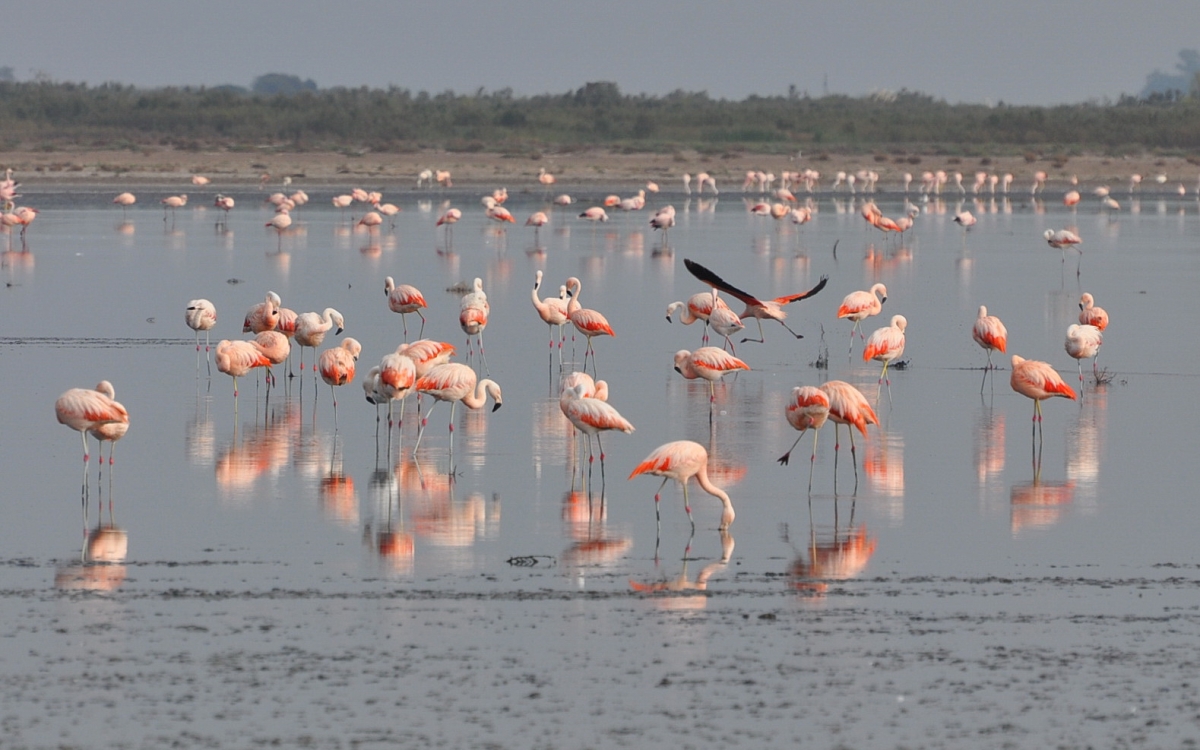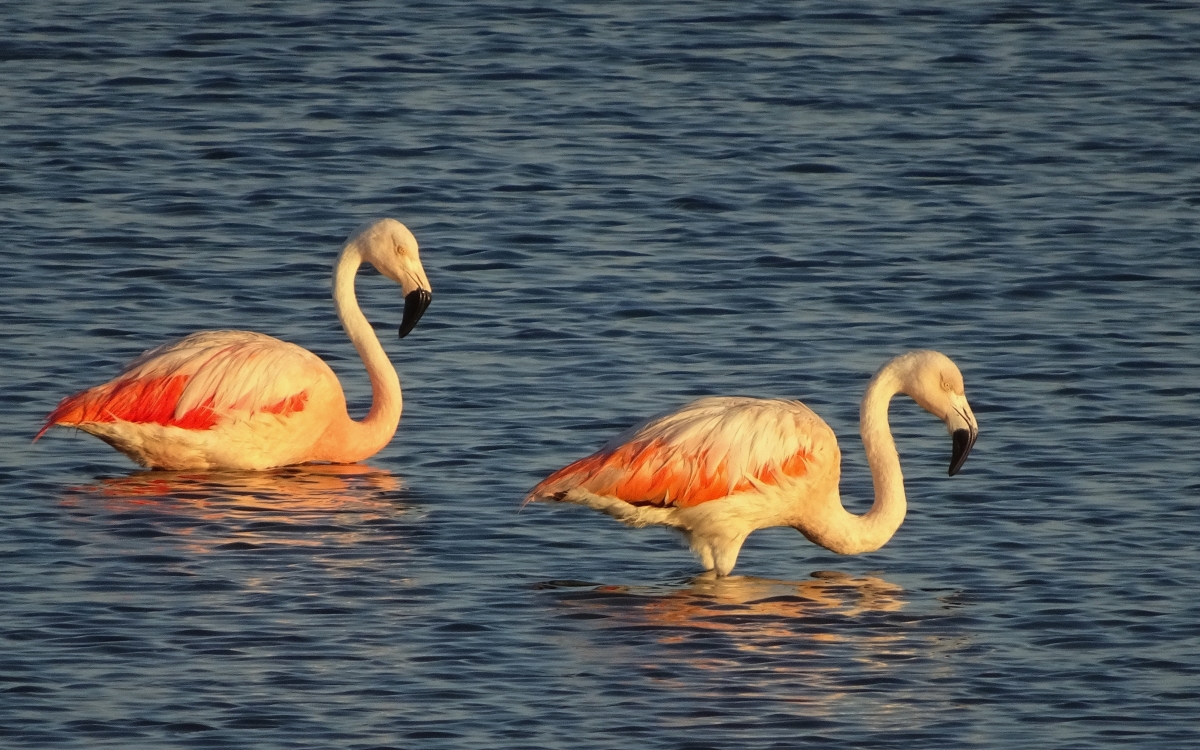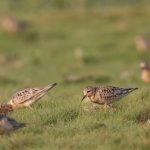Laguna Mar Chiquita (“the small sea lagoon”) is one of the most important sites in the Americas for migratory shorebirds and other waterbirds, with several million birds using the lake annually. Located in the Argentine provinces of Cordoba and Santiago del Estero it is the fifth largest endorheic saline lake in the world, covering on average about 6000 km².
In 1989, the global significance of Laguna Mar Chiquita for shorebird conservation was recognized by its designation as a site of “Hemispheric Importance” within the Western Hemisphere Shorebird Reserve Network (WHSRN), due to the large numbers of shorebirds that use the lake each year (including more than 500,000 Wilson’s Phalarope Phalaropus tricolor). The lake is also recognized as a Ramsar Site, an Important Bird and Biodiversity Area (IBA), and as one of the highest priority sites for high Andean flamingos as identified by the Grupo de Conservación Flamencos Altoandinos.


Photos: Diego Luna Quevedo.
The lake’s “Hemispheric Importance” designation goes beyond the sheer number of shorebirds that use its resources. Laguna Mar Chiquita is a cornerstone of a complex ecological network of key sites for shorebirds throughout the Western Hemisphere. The loss of any one threatens the survival of the whole system. The connectivity of Mar Chiquita was recognized early in the history of conservation efforts at the lake, when in June 1992, it was made part of a “three-way twinning” with Great Salt Lake (Utah, USA) and Mono Lake (California, USA). Both are also WHSRN Sites, and share ecological similarities with Laguna Mar Chiquita, including the fact that all three support large numbers of Wilson’s Phalaropes.
Despite Mar Chiquita’s unique ecological importance, in recent years it has increasingly been threatened by upstream water diversion, agricultural expansion in the immediate surroundings, and pollution. An ambitious plan to create the new Ansenuza National Park, potentially up to 700,000 hectares, seeks to address many of the threats to the area. A long-time dream of scientists and conservationists in Cordoba, the initiative is becoming a reality today thanks to the work of the Argentine Ministry of Environment, Water, and Public Services, National Parks of Argentina, and collaboration from the century old NGO Aves Argentinas. Ansenuza National Park is the focus of the 2018 British Birdwatching Fair. Funds raised by the Fair will help support local capacity building in the region to enable the creation of the national park.
The WHSRN Executive Office recently helped support a good governance workshop at Laguna Mar Chiquita to build a foundation for a governance process for conservation and local development in the future national park. Enrique Bucher, academic at the National University of Córdoba and member of the Argentine WHSRN Council, explained that “the National Park designation will improve conditions to manage the shorebird habitats within this WHSRN site, and will enable more fluid interaction between the provinces involved in the management of the Río Dulce and the water that fills the Mar Chiquita wetland.”
The goal of Ansenuza National Park is to develop a model of conservation that exists in harmony with tourism and local industry. Not only will the future national park add additional protection for shorebirds at the Laguna Mar Chiquita WHSRN site, but it will protect one of the most important sites for the conservation of migratory birds in all of South America

Photo: Diego Luna Quevedo.






